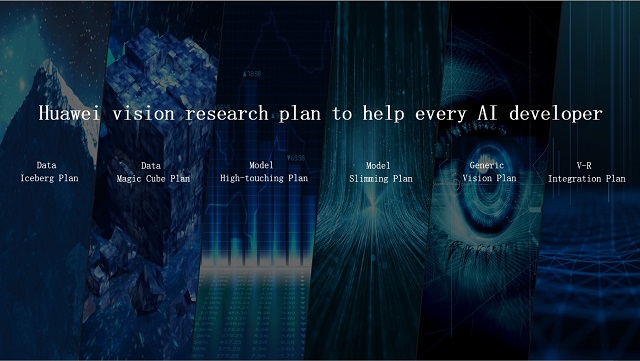Cloud
Huawei releases Computer Vision Plan to help global AI Developers

At Huawei Connect 2018, Huawei released its AI strategy for the first time, focusing on AI basic research and collaboration with global research institutes and developers to build an AI ecosystem.
At Huawei Developer Conference (HDC) 2020 Cloud, Huawei showcased a holistic package of its base of research in computer vision and released the Computer Vision plan and invited global Artificial Intelligence (AI) experts to participate in the research.
The Atlas AI computing platform powered by Huawei Ascend AI processors will provide powerful computing to support this plan. The research results will be implemented in Huawei’s MindSpore, the all-scenario AI computing framework.
“Huawei has invested heavily in the basic research of computer vision with focus on data, knowledge, and models. In the past two years, Huawei has published more than 80 papers at leading AI conferences and journals such as CVPR, ICCV, NeurIPS, and ICLR. Huawei has made many groundbreaking achievements. These research results are opened to the industry in the forms of academic papers and source code. We invite global AI developers to research, develop, and deploy AI based on Huawei’s existing research results.” Said Tian Qi, Chief Scientist of Computer Vision, Noah’s Ark Laboratory at Huawei, and IEEE Fellow, shared the latest research progress in computer vision.
At the event, Professor Tian Qi introduced the computer Vision plan, which incorporates six sub-plans. They are the following:
- Data Iceberg Plan: Use a small amount of annotated data to unleash the potential of massive unannotated data and support model training in small sample scenarios.
- Data Magic Cube Plan: Use multi-modal quantification, alignment, and fusion strategies to enhance the learning capability of models in real-world scenarios.
- Model High-touching Plan: Build large models on the cloud to explore the performance limits of various vision tasks.
- Mode Slimming Plan: Build efficient computing models on the device side to help various chips complete the complex inference.
- Generic Vision Plan: Define vision pre-training tasks to build generalized vision models.
- V-R Integration Plan: Direct computer vision to real artificial intelligence via virtual-real integration.
“We welcome global AI researchers to join Huawei’s Vision Plan to innovate and explore the future together. The powerful computing capability of Huawei Atlas AI computing platform will accelerate the implementation of the Vision Plan. The research results will be fully implemented on Huawei’s all-scenario AI computing framework MindSpore and open to the industry, helping every AI developer.” Tian Qi added.
Also, Check:
Huawei announces $200 million investment to advance Kunpeng computing industry







